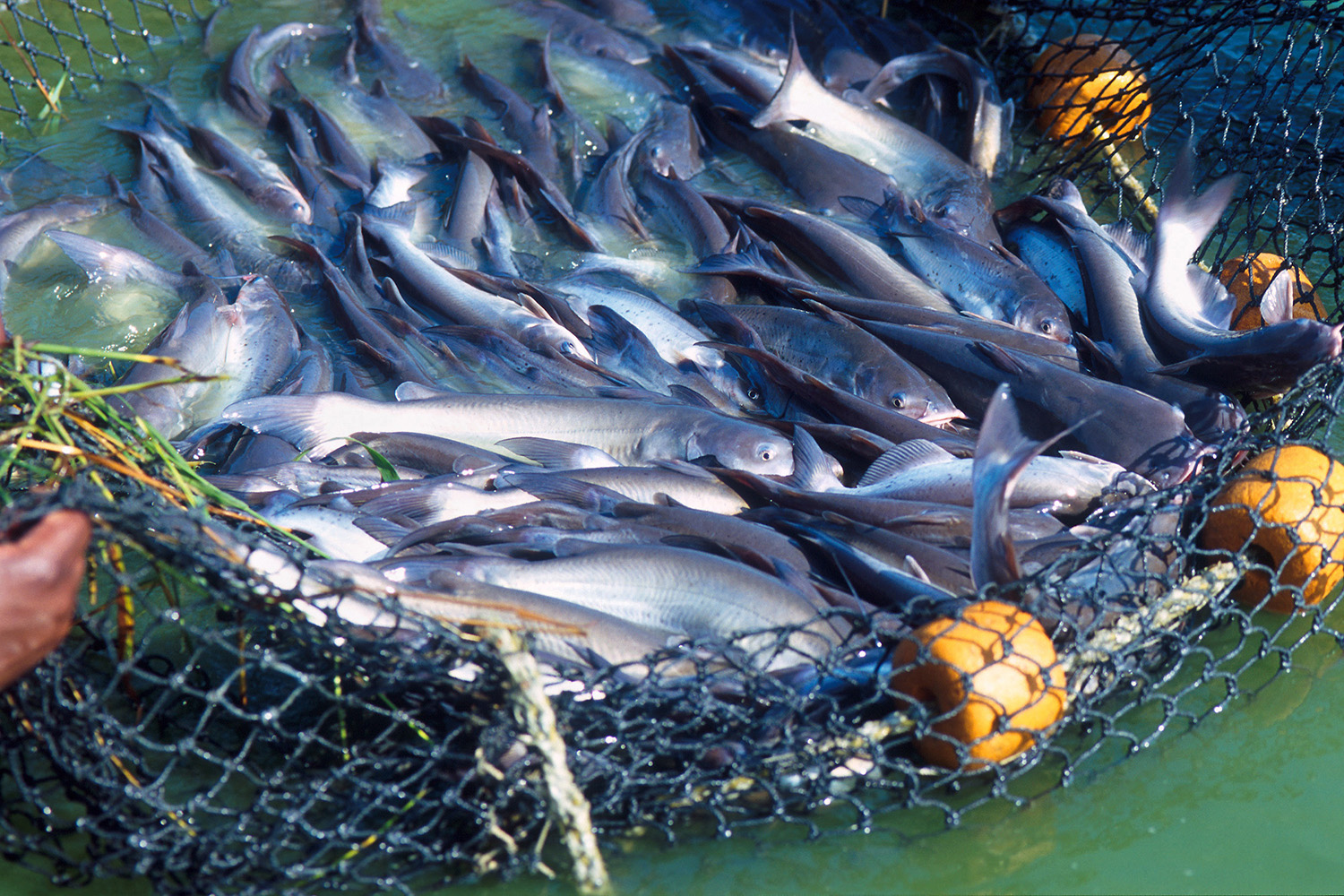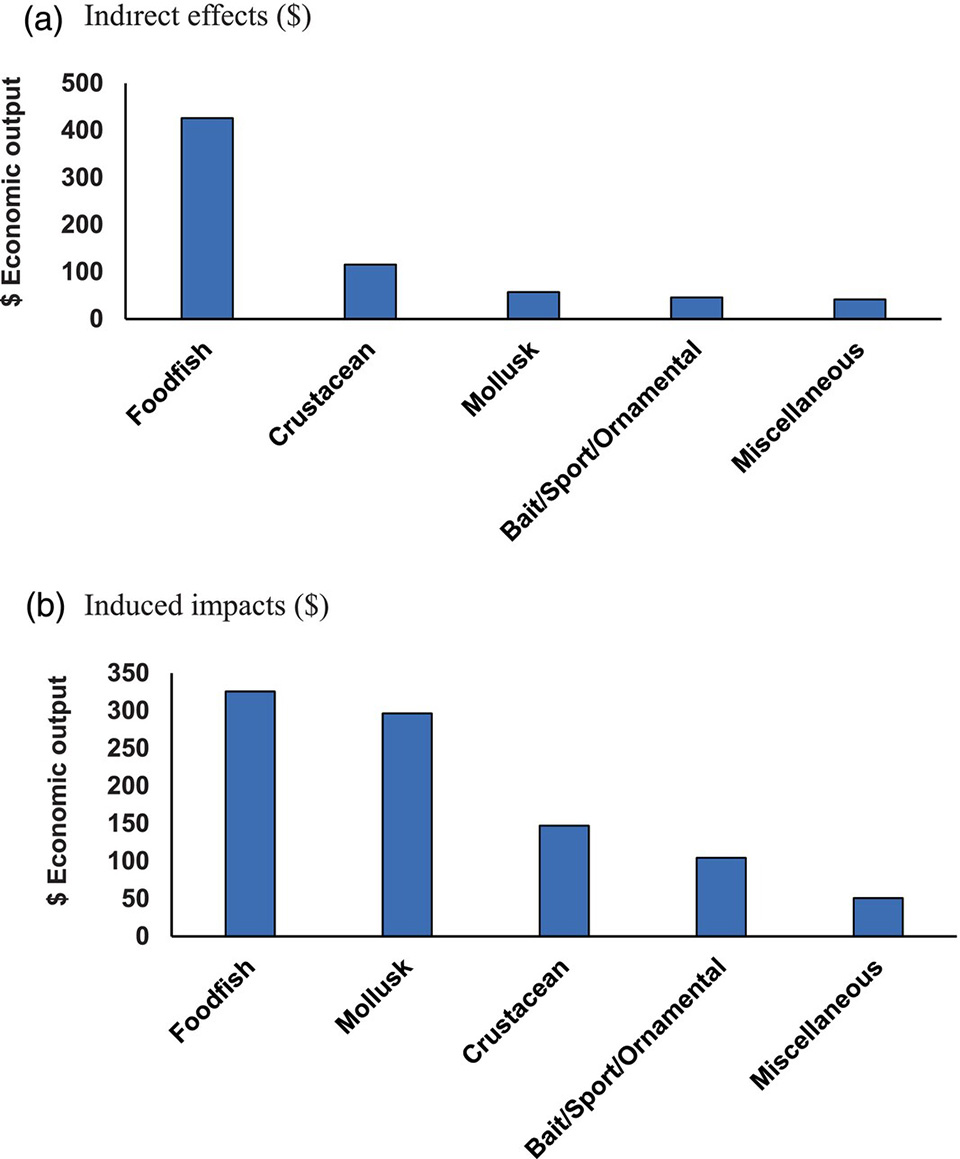26 August 2024
The total economic impact of US aquaculture production can be 3-4 times greater than the farm-level impacts
A recent study by Dr. Ganesh Kumar and co-authored and published aquaculture researchers from 11 different institutions Journal of the World Aquaculture Society Discusses the economic contributions of aquaculture in the United States and the linkages of aquaculture agribusinesses with other economic sectors and how policy decisions affecting aquaculture result in economic ripples throughout local, regional, and national economies.
„American aquaculture farms raise a wide variety of species ranging from food fish, molluscs, crustaceans, bait fish, game fish, ornamental fish and other aquatic plants and animals,” said Dr. Ganesh Kumar, associate research professor at Mississippi State University and lead author. The study said Lawyer. „The annual contribution of domestic aquaculture farms to the U.S. economy has not been estimated since 1996, and we used primary farm-level data on expenditures and outputs to estimate the economic impact of U.S. aquaculture. The results of this research show that U.S. aquaculture farms contribute approximately $4 billion and support more than 22,000 jobs annually. .
The National Marine Fisheries Service (NMFS) annually publishes the estimated economic impacts of wild-caught seafood landings and seafood imports into the United States. However, these estimates do not include impacts on domestic aquaculture production, as adequate and relevant information on costs is not available. US aquaculture production is estimated at approx One-fifth Inclusion of domestic aquaculture in the value of total U.S. seafood production is critical to accurately represent the contribution of seafood to the U.S. economy.
Previous national estimates of the economic contributions of US aquaculture are nearly 30 years old. The current study is based on extensive data from extensive farm-level surveys (capturing 77 percent of the total value of US aquaculture), supplemented with information from publications on the remaining aquaculture sectors. The economic contributions measured in this study are limited to those at the farm level and do not include the subsequent impacts of agricultural products moving through the processing, distribution, food service, and retail sectors in the U.S. economy.
Economic analysis of US aquaculture is challenging because of the diversity of species and production methods across the country. American aquaculture farms produce hundreds of different freshwater and marine species of fish, shrimp, crab, shellfish, seaweed, and other species in a variety of production systems. Also, U.S. aquaculture is dynamic because new farming practices are rapidly evolving. Improved technologies are created.
Seafood loss and waste rates in the U.S. are half of previous estimates
Further complicating American aquaculture is that costs and expenses vary regionally across the United States. Because aquaculture farms are located in nearly every state, the data used to estimate economic impacts must be robust enough to accurately represent national expenditures and outputs.
„Most of the jobs created are rural employment, indicating the economic relevance of US aquaculture farms,” said Dr. Kumar. „Annually generated labor income and value added are approximately $1 billion and $3 billion, respectively. The diverse contribution of different aquaculture species, production systems, and regions has resulted in economic linkages to more than 96 percent of existing U.S. economic sectors. The importance of the need for U.S. aquaculture regulations that increase cost efficiency and productivity on farms is also important. This study emphasizes that
An analysis of linkages of US aquaculture production activities with other economic sectors found that food fish farms made the largest contributions, followed by mollusc farms. Freshwater aquaculture farms contributed twice the contribution of marine aquaculture due to the large size of the freshwater aquaculture sector. The economic output multiplier for all US aquaculture production was 1.73. Nearly all (96 percent) of the economic sectors in the United States are supported by U.S. fisheries, with most of this contribution occurring in rural economies where most production sites are located.
US aquaculture includes agricultural production More than 1,500 species Grown in different production systems with different gear types and management practices. Such diversity results in spending patterns that vary widely in species, production systems, and types of gear that are linked to and support different sectors of the economy. The level of economic contributions is influenced not only by the amount of expenditure but also by the number of sectors supported.
The results of this study were limited to the effects of farm-level costs Robust datasets Not available beyond the farm level for all US aquaculture sectors. Thus, the downstream impacts of the processing, distributors, food service and retail sectors to food products from farmed fish and shellfish production were not assessed. Downstream impacts from anglers and first point buyers of fish from the marketing stages of bait fish and sportfish (including trout sold for recreation) or ornamental sector supply chains are not included. These downstream sectors can make substantial economic contributions beyond farm-level costs.
Aquaculture development in the United States is constrained by a regulatory framework Restricted growth Existing aquaculture sectors. The current size and economic contributions of U.S. aquaculture would be substantially greater than its current size if regulatory controls were streamlined and implemented in a more timely and efficient manner. Creating clear property rights and permitting processes for marine waters will support the development of marine aquaculture, particularly marine aquaculture that benefits coastal communities and working waterfronts.
„Given America’s aquatic resources, both freshwater and marine, there is considerable potential for growth in U.S. aquaculture that will improve its economic contributions to communities and consumers across the United States,” the study authors concluded.
Now you have reached the end of the article…
… Consider supporting GSA’s mission to advance responsible seafood practices through education, advocacy, and third-party assurances. The Lawyer It aims to document the evolution of responsible seafood practices and share the extensive knowledge of our vast network of contributors.
By becoming a member of the Global Seafood Alliance, you ensure that all of our pre-competition work continues through membership benefits, resources and events. Individual membership costs $50 a year.
Not a GSA member? Join us.

„Oddany rozwiązywacz problemów. Przyjazny hipsterom praktykant bekonu. Miłośnik kawy. Nieuleczalny introwertyk. Student.



